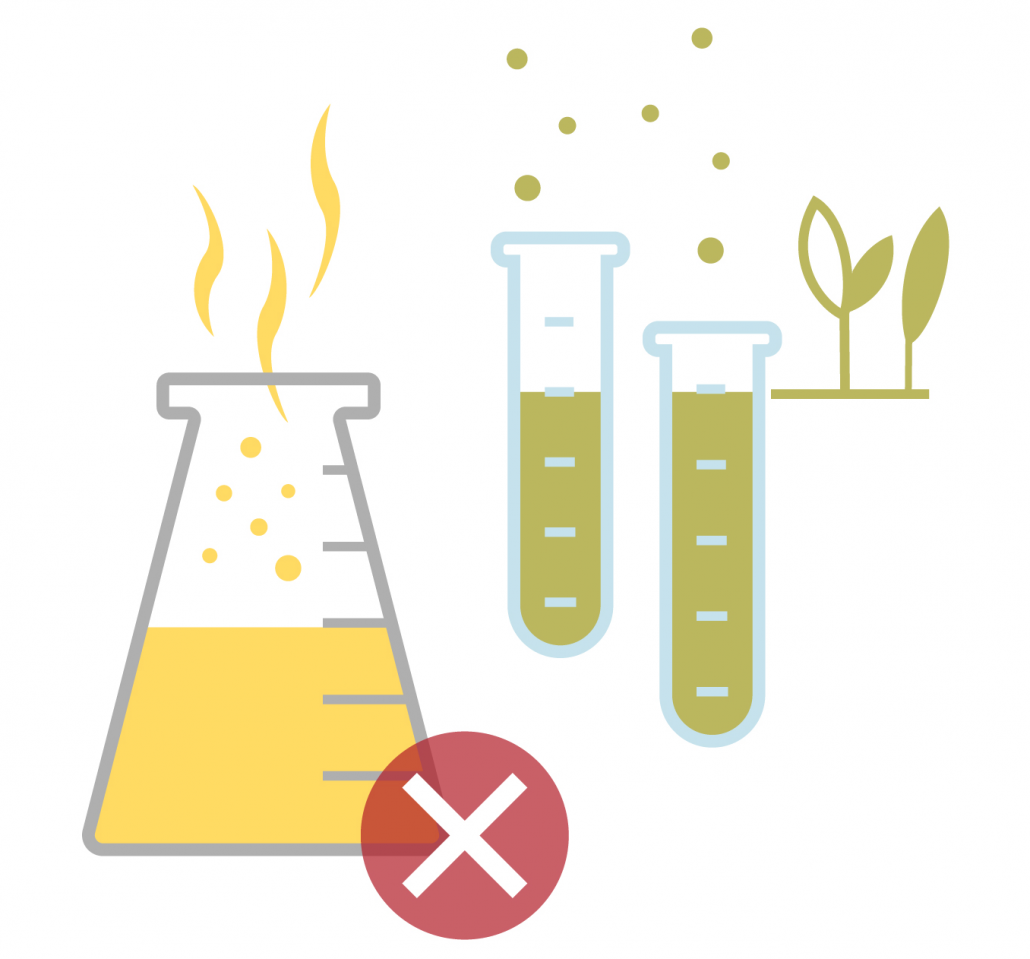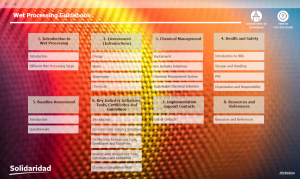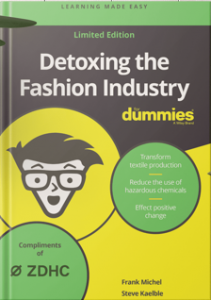Sector risk of chemical use and wastewater

All tools and resources on chemical and environmental management can be found in this overview:
At the global policy level, for example, there is the Strategic Approach to International Chemicals Management (SAICM). SAICM deals with the cross-industry challenges of international chemicals management. In this video, you can see a summary of the specific challenges involved:
Specific production steps are extremely water-intensive and require professional treatment of the waste water. In particular, chemicals used in wet finishing processes contribute to the pollution of waste water. The often inadequate wastewater treatment impairs the water quality in the production region and thus influences local ecosystems such as drinking water reserves and farmland.
Good chemical management in textile production is therefore necessary to support the sustainability of the textile industry. The long-term goal is the gradual reduction and substitution of hazardous chemicals in the production process. This is the only way to protect workers, consumers and the environment from the effects of chemical-intensive textile production.
To promote international harmonization in chemicals management, the Textiles Partnership joined the Chemicals in Products Programme (CiP) in 2017. The CiP is coordinated by SAICM.
The Partnership Initiative Chemical and Environmental Management (completed) worked on good chemical management.
Textiles pass through numerous production steps on their way from raw material to end product. In these steps, they are equipped with chemicals to achieve the desired colors and product properties. Some of the substances used are described as "hazardous". Especially in wet processes - such as dyeing, bleaching and other finishing processes - large quantities of chemicals are used. They therefore represent a risk hotspot. Good chemicals management therefore concentrates on three central objectives:
- Chemicals in production should be used and stored as safely as possible.
- Hazardous chemicals should be substituted wherever possible.
- Waste water and other waste products should be disposed of properly.
Thus, good chemical management in wet finishing promotes three important measures: sustainable input management, good housekeeping and adequate wastewater treatment.
The following materials provide a general overview on the topic of chemical management in the textile production:
For effective chemical management, the production site needs an overview of the chemicals used and their properties. An inventory of the chemicals used and stored in the plant is necessary in order to
- track which chemicals are used
- conduct risk assessments
- avoid unnecessary stocks
- inform employees and local emergency personnel on potential dangers.
Inventorying chemicals is therefore the first fundamental step towards establishing good chemicals management.
The Partnership for Sustainable Textiles has developed a template for chemical inventories. This template is aligned with ZDHC requirements and can assist with the establishment of a chemical inventory. This template and other information for the recording of an inventory are available here:
To substitute hazardous chemicals, textile producers use two common formats of banned lists to exclude hazardous substances or groups of substances: an exclusion list for input management and a final exclusion list for quality control of the final product.
The Manufacturing Restricted Substances List (MRSL) lists chemicals whose use in the production process is restricted to specified dosages or which are completely prohibited. The Restricted Substances List (RSL) refers only to the end product and lists substances or substance groups that may only be restricted or not detectable in the end product. Both lists, the MRSL and the RSL, must be complied with in order to reduce the exposure to chemicals or chemical residues.
The members of the Partnership for Sustainable Textiles have agreed to adopt the MRSL of the Zero Discharge of Hazardous Chemicals (ZDHC) initiative. This means that the members use the ZDHC MRSL or their own MRSL that goes beyond it and thus commit themselves to gradually replacing more than 160 problematic chemicals in textile production with harmless substances. The ZDHC MRSL harmonises the requirements for producers, which makes it easier for them to operate a uniform chemical input management system.
In the area of RSL, international harmonisation is more complex. Many companies work with their own Restricted Substances lists. These lists are based on the national and company-specific requirements that must be complied with by suppliers. Here, too, greater harmonisation is sought, for example through the use of the AFIRM (the Apparel & Footwear International RSL Management Working Group) RSL, which has already been joined by many brands.
More information on both MRSL and RSL can be found here:
Good housekeeping is another important component of good chemicals management. Good housekeeping refers to a series of recommended practices that minimise negative impacts on the environment and people. In addition, costs can be saved through improved resource efficiency.
Good housekeeping practices take into account:
- adequate maintenance and cleaning practises,
- measures to avoid leaks,
- avoiding the discharge of untreated wastewater,
- controlling of critical process parameters,
- recording and reduction of avoidable waste and gaseous emissions,
- proper storage and handling of substances, which pose a risk to water and groundwater,
– measures to guarantee occupational and health safety as well as energy efficiency.
With 80 to 120 litres of water consumption per kilo of textile fabric, the textile industry consumes the most water compared to other industries. This exacerbates the scarcity of water in many water-poor production regions, especially as waste water is often polluted by chemicals. Wastewater treatment and the proper disposal of sewage sludge are therefore indispensable. Good wastewater management starts with avoiding hazardous chemical inputs. In this respect, all the starting points of good chemicals management are interlinked.
The actual contamination of the wastewater by chemicals depends on several factors; the textile substrate (e.g. cotton, polyester, viscose, polyamide, etc.), the type of presentation (woven, knitted, yarn, flake, ready-made textiles), the process sequences used (pretreatment, dyeing, printing and finishing processes) and the chemical substances used (e.g. type of dyestuff applied). The water efficiency of the plant also influences the chemical concentrations in the waste water. The waste water must be treated in accordance with all these factors in order not to harm people or the environment.
Waste water and sludge analyses are instruments for verifying and ensuring proper waste water management. If the limit values of the applicable MRSL are exceeded, the reasons for this must be established. The Partnership for Sustainable Textiles has agreed on a wastewater template that enables the classification of wastewater analysis values and transparent documentation.
Further information on wastewater can be found here:
Improving and establishing chemical management in wet processes is a complex task. The Textiles Partnership has therefore developed two freely available training courses on chemical management in wet processes and compiled further freely available training materials.
These training materials can be found here:
Book Recommendation: Guidebook Wet Processing (Solidaridad)
 This guidebook looks at the challenges and consequences of water pollution and use of chemicals, water and energy. It considers the various areas where environmental impacts can be addressed throughout a garment’s value chain; from growing or producing fibres, spinning and weaving processes, wet processes such as dyeing and washing, cut and trim, all the way to how the consumer takes care of the garment. Download
This guidebook looks at the challenges and consequences of water pollution and use of chemicals, water and energy. It considers the various areas where environmental impacts can be addressed throughout a garment’s value chain; from growing or producing fibres, spinning and weaving processes, wet processes such as dyeing and washing, cut and trim, all the way to how the consumer takes care of the garment. Download
Book Recommendation: Detoxing the Fashion Industry for Dummies
 Written by ZDHC Executive Director Frank Michel, the book simplifies complex realities and offers valuable insights into how to take action and implement already proven innovations to accelerate change.
Written by ZDHC Executive Director Frank Michel, the book simplifies complex realities and offers valuable insights into how to take action and implement already proven innovations to accelerate change.
It provides large and small fashion brands with the opportunity to gain the insight and information needed to detoxify their supply chains. Simultaneosuly it enables readers to distinguish greenwashing from stonewashing when it comes to their textile choices.
As a guide to this sustainable fashion revolution in chemistry it is packed with details about how apparel production works, what goes into the process, how it can impact the environment and tangible actions taken by brands to solve this.
Download: https://www.roadmaptozero.com/dummy-book


